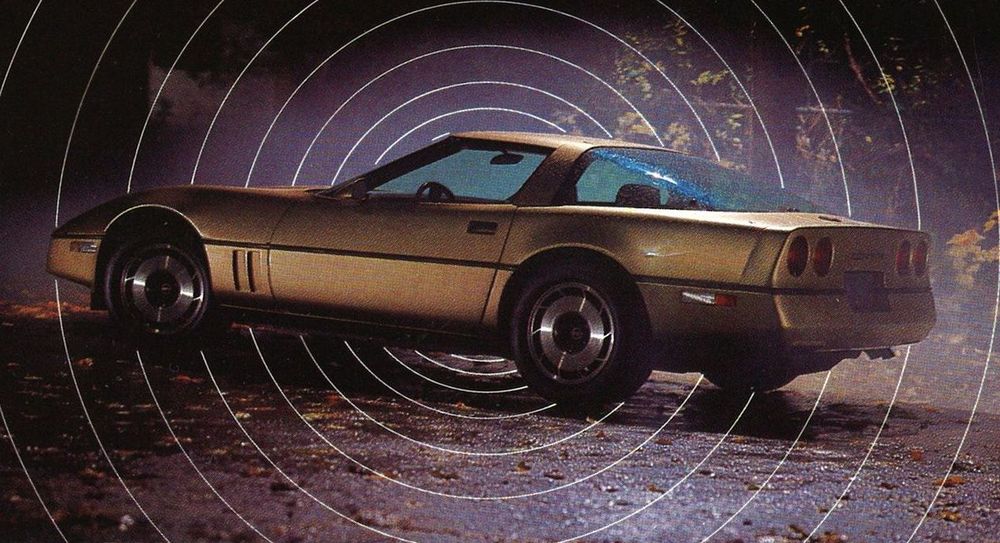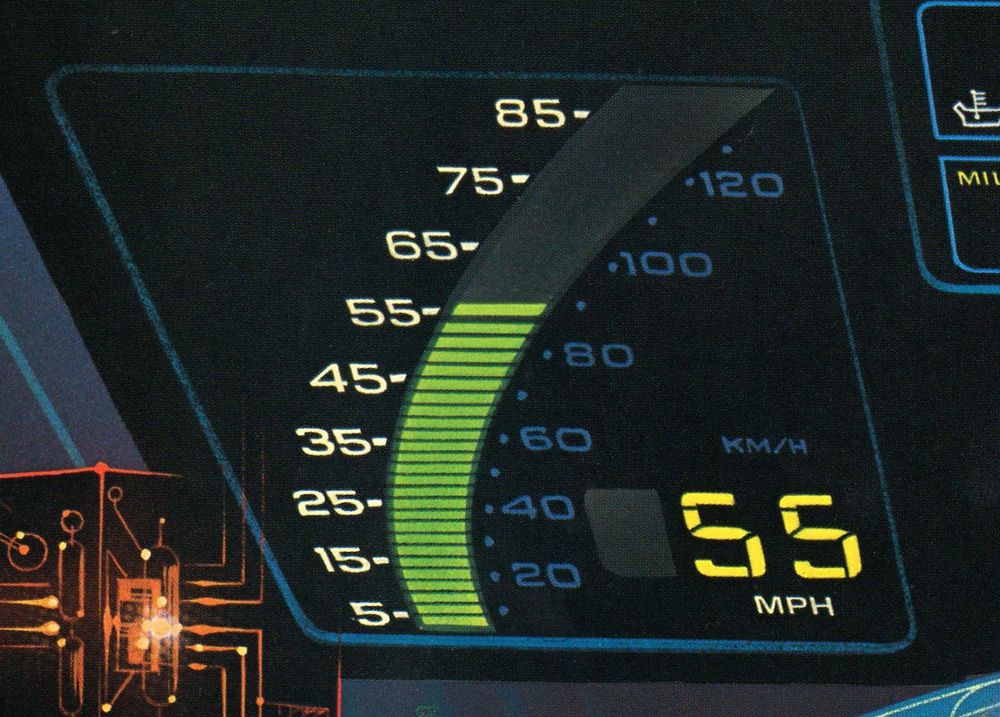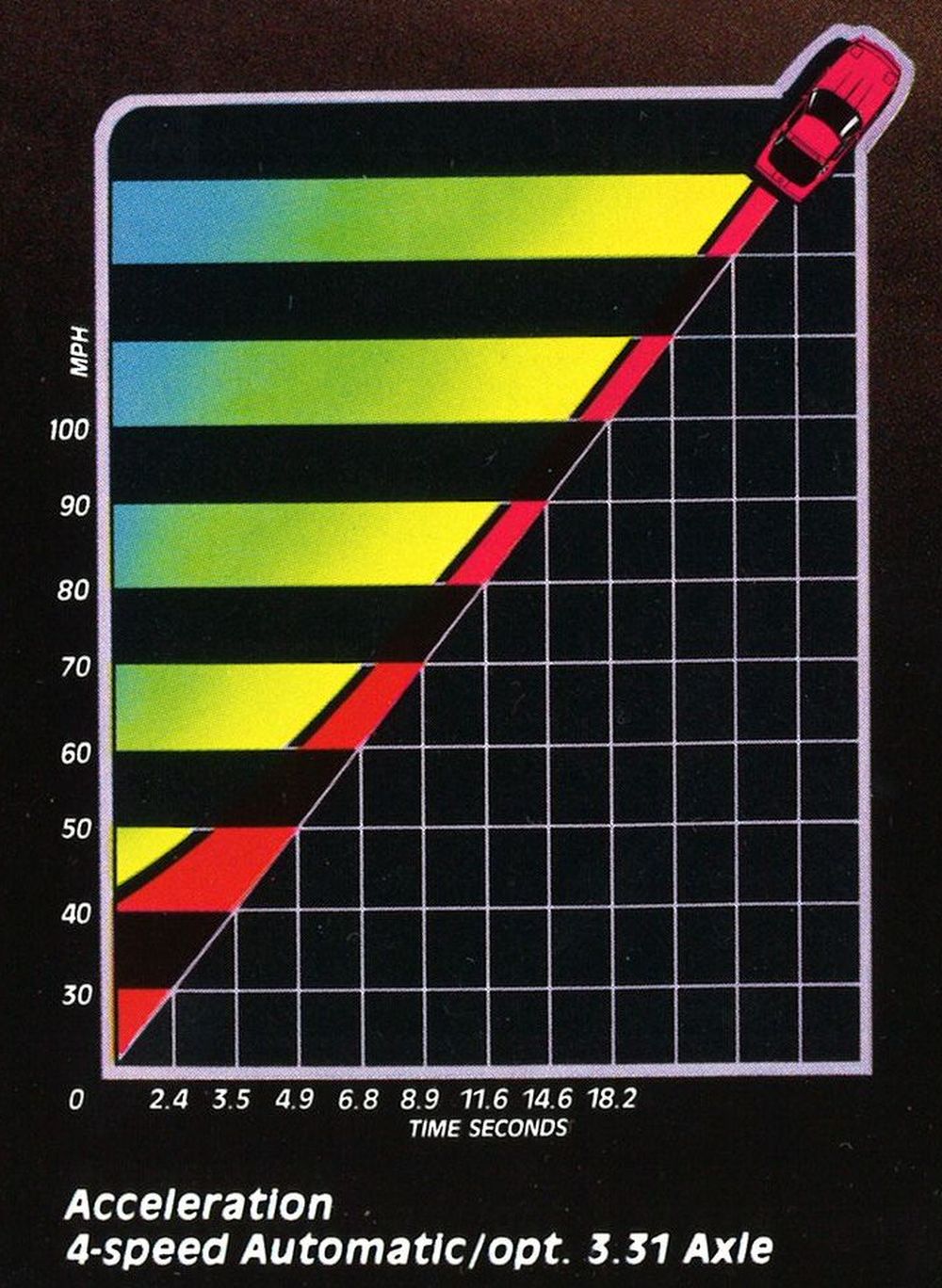Rebirth of a Legend: 1984 Chevrolet Corvette brochure
Posted on Dec 10, 2014 in Featured | 2 comments

It’s hard to overstate the impact that the fourth-generation Corvette made upon its national introduction on April 21, 1983. Replacing a popular car that had grown very familiar through its incredible 1968-1982 lifetime was an incredibly fresh and forward-thinking new model that was completely of the 1980s, but would also prove timeless in the physical appeal of its crisp, unadorned lines; chief engineer David R. McLellan, chief designer Jerry P. Palmer, and the rest of the team did a stellar job.

This was still the era of the 55 MPH speed limit, but GM and Chevrolet threw every bit of high-tech engineering they had in their arsenal at this new Corvette. While the liquid crystal display (LCD) digital speedometer graphics of interior designer Art Pryde may only have read to 85 MPH, there was a third space in the numeral readout to allow for the car’s true 140-plus MPH potential—it actually registers up to 157 MPH/255 KPH.

One of the few carry-over pieces of the car was its 350-cu.in./5.7-liter V-8, topped with “Cross-Fire” twin throttle body fuel injection. It made 205-hp and 290-lb.ft. of torque, a far cry from the 455-hp and 460-lb.ft. of torque made by the base 6.2-liter V-8 in today’s seventh-generation Corvette. (Tuned-Port Injection would bring 230-hp in 1985.) As the graphic below illustrates, 0-60 took a snoozy 6.8 seconds with the automatic and 6.4 with the 4+3-speed manual, while the Z51-equipped 2015 model does the same in a rather more rapid 3.8, and is also available with a 7-speed manual—the Z06 is even faster.

It’s interesting to note that this 58-page brochure, which has a February 1983 date stamp, shows things like the intended-to-be-standard 15-inch alloy wheels (pages 50-51) that were never released, although they can be seen on the “1983” model in the National Corvette Museum; all production models wore the eye-catching 16-inch design.





.gif)


Although these 4th generation Corvettes have a devout following, they were incredibly expensive at the time, with some models actually selling for the same price as today’s introductory model! I like the 5th generation’s styling better, as it was less Camaroish looking, and the prices were actually lower than the 4th generation models. GM was hoping that Americans would pay through the nose for the 4th generation Corvette, as a lower priced alternative to the exotic cars at the time, such as Ferrari and Lamborghini, and put extensive engineering into the new model, but not enough to justify its price.
To say the $20K 1984 Corvette was overpriced is simply ignorant when comparing to Porsche 911($37K)Ferrari 308($58K), Lambo Countach ($100K)